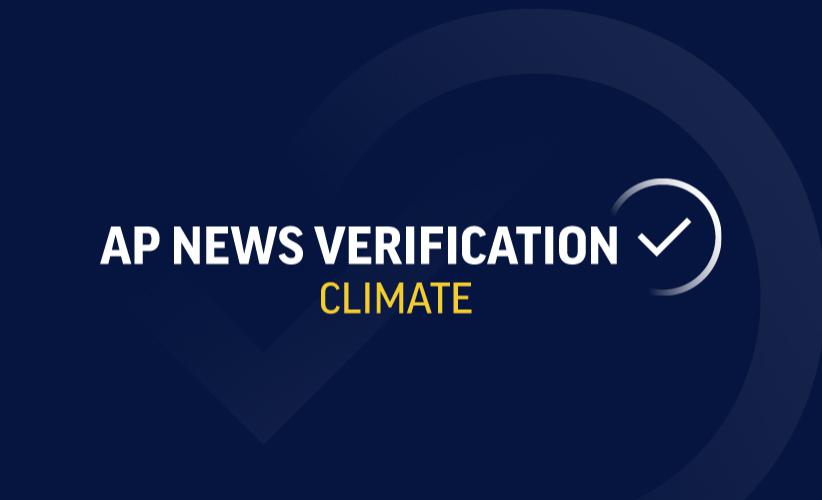CNBC report on climate research didn’t confirm ‘chemtrails’ theory

CLAIM: A CNBC story on research into technology to combat climate change admitted that “chemtrails” are real.
AP’S ASSESSMENT: False. The story reported on a federal plan to research technology such as “stratospheric aerosol injection,” the concept of placing materials in the atmosphere to reflect sunlight away from Earth. Experts say the idea is being investigated and not currently in use.
THE FACTS: A TikTok video also shared on Instagram is distorting the facts around a recent CNBC story to advance a long-running conspiracy theory that the condensation trails, or contrails, left in the air by planes are actually dangerous “chemtrails.”
“Chemtrails are real,” text shown in the video reads. The theory posits that aircrafts are spewing toxic chemicals as part of a nefarious and secret plot.
“I’ve literally had numerous videos taken down talking about this, and now they’re admitting it,” claims the TikTok user. “This is from CNBC, like — stratospheric aerosol injections.”
The video, viewed more than 9,000 times on TikTok, shows screenshots of an Oct. 13 CNBC story headlined, “White House is pushing ahead research to cool Earth by reflecting back sunlight.” The person in the video then proceeds to show footage of vapor trails in the sky.
But the CNBC story wasn’t “admitting” that chemtrails are real, and experts say the aerosol injection technology it discussed is not currently in use.
The CNBC report looked at a White House plan to study ways to reduce the amount of sunlight that reaches Earth, in an effort to combat global warming. In passing a federal appropriations bill earlier this year, Congress directed federal agencies to coordinate with the White House Office of Science and Technology Policy to develop a five-year plan assessing the use of such solar and climate interventions.
One possibility, discussed in the CNBC report, is the use of stratospheric aerosol injection, an idea taken from the climate effects of large volcanic eruptions.
These eruptions emit sulfur into the atmosphere, where it turns into “highly reflective microscopic droplets,” said Ben Kravitz, an assistant professor of earth and atmospheric sciences at Indiana University.
Those sulfur droplets “reflect some sunlight back to space, and it cools the planet a little bit,” he said in an email. “Stratospheric aerosol injection is built on that idea — if nature can cool the planet, maybe we can do it on purpose.”
The idea is not without risks, Kravitz added, and the point of research is so that decision makers can weigh whether to use such technology.
“Currently nobody is doing this,” he said. “The amount of aerosol one would need to put in the stratosphere to noticeably change the climate is on the order of millions of tons. If someone were doing that, everyone would know.”
David Keith, a Harvard University professor who researches this field, known as solar geoengineering, likewise told the AP that this is “a discussion about a technology that is possible but is not now used.”
Keith said in an email that aerosol injection would not leave contrails like those left by planes.
Sulfur aerosols are a component of industrial pollution so the effect of aerosol injection would likely resemble a city sky, Kravitz said.
“That’s kind of what it would look like if someone were doing climate-altering stratospheric aerosol injections – the sky would probably look a little whiter and hazier, much like it looks in a big city,” he added.
___
This is part of AP’s effort to address widely shared misinformation, including work with outside companies and organizations to add factual context to misleading content that is circulating online. Learn more about fact-checking at AP.


